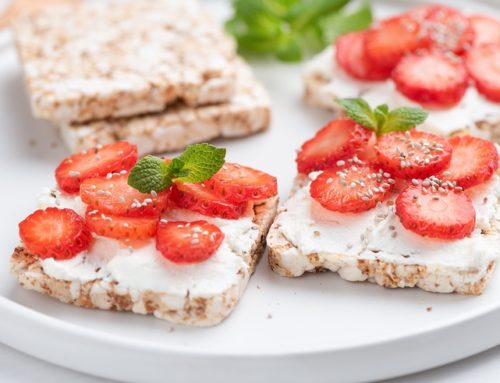Last week we discussed how plateaus can be a normal part of the weight-loss process. But fear not – there are simple steps you can take to start shedding pounds again! Even small tweaks to your nutrition or exercise regimen can help get the scale moving. Take a peek at our expert-approved list below.
- Be cautious of carbs. Refined carbohydrates, such as those found in breads, cereals, and snack foods, digest relatively quickly and cause blood sugar to rise – and then fall – fast. This often leads to feelings of hunger soon after eating, and cravings for more carbohydrate-based foods. Not only can a high-carb meal or snack be less satisfying, we also tend to consume larger portions of these foods. Think about it: when was the last time you sat on the couch and mindlessly over ate a steak or a salad? It’s more likely you burned through a bag of chips, or a pint of sorbet. Take a peek at where in your daily routine you can nix some refined carbohydrate foods, such as white breads, rice, or pasta, and products with added sugars like yogurts, cereals, and beverages.
- Increase your fluid intake. A common side effect of dehydration is fatigue, which can make getting in a workout or your daily steps much more difficult. In addition, studies suggest that drinking 17 fluid ounces of water can actually boost your metabolism by 24-30% for over an hour. That’s right, drinking water might just be the easiest way there is to burn a few extra calories! With weight loss as an end goal you want to be sure to avoid calorie and sugar-dense beverages like juice, sports drinks, sweetened coffee drinks, soda, and alcohol, as these beverages can add hundreds of unnecessary extra calories to your day. Stick with water and other calorie-free beverages like seltzer, sparkling water, and other sugar-free selections.
- Get more sleep. While we are sleeping our bodies are hard at work recovering from the day, and preparing for the next one. One of these jobs includes balancing hormones. When we don’t get enough sleep, the hormones responsible for appetite regulation become unbalanced. Levels of the ‘hunger hormone’ ghrelin increase, while leptin levels, the hormone responsible for decreasing hunger, fall. The result? More difficulty with managing hunger levels and cravings throughout the day. In addition, insufficient sleep has been shown to decrease our metabolic rate by over 2%. In other words, sleeping less can result in fewer calories burned during the day. Not great news for anyone trying to lose weight. To avoid these pitfalls, aim to get at least 7-8 hours of sleep per night.
- Maximize protein intake. Eating more protein promotes weight loss success in multiple ways. First, it boosts satisfaction after a meal by stimulating the release of hormones that turn off hunger. Also, digesting protein actually boosts our metabolic rate to the tune of 20-30%, considerably more than either carbohydrate or fats do. This has to do with the thermic effect of food (TEF), or the calories required to consume, digest, transport, and use the food we eat. Aim to consume a good portion of protein at each meal to see these benefits throughout the day.
- Fill up on fiber. Fiber also works in multiple ways to stimulate weight loss. First, including plenty of fiber at a meal can help make you feel more full and satisfied while consuming less calories. More fiber at meals can also reduce how many calories are absorbed from other foods. Research indicates that increasing fiber intake to 36 grams a day can reduce the number of calories absorbed at meals. So, fill up your plate with high fiber foods like vegetables, fruit, and some whole grains like quinoa, oats, and brown rice.
Weight loss plateaus are difficult, but with the right tips and perseverance, you can succeed.





